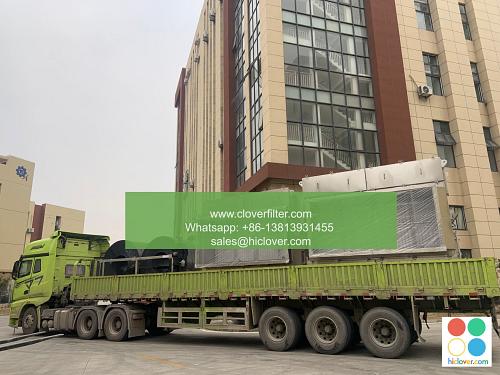Air Filter Design for High-Efficiency Air Filtration Systems for Industrial Applications

Air filtration systems play a crucial role in maintaining a healthy and safe working environment in industrial settings. The design of air filters is a critical aspect of these systems, as it directly affects their efficiency and effectiveness in removing airborne contaminants. In this article, we will delve into the world of air filter design for high-efficiency air filtration systems, exploring various application areas and highlighting key considerations for industrial applications.
Introduction to Air Filter Design
Air filter design involves the creation of filters that can effectively capture and remove airborne pollutants, such as dust, pollen, smoke, and other particulate matter. High-efficiency air filtration systems require filters with precise designs, taking into account factors like airflow, pressure drop, and filtration efficiency. The goal is to achieve optimal performance while minimizing energy consumption and maintenance costs.
Key Considerations for Air Filter Design
When designing air filters for industrial applications, several key factors must be considered:
– Filtration Efficiency: The ability of the filter to capture particles of varying sizes, including PM2.5, PM10, and other ultrafine particles.
– Airflow and Pressure Drop: The filter’s impact on airflow rates and pressure drop, which affect the overall system performance and energy efficiency.
– Filter Media and Materials: The selection of suitable filter media and materials, such as HEPA, activated carbon, or electrostatic filters, depending on the specific application and contaminant type.
– Filter Configuration and Size: The design of the filter housing, including the filter’s shape, size, and configuration, to ensure optimal performance and ease of maintenance.
Application Areas for High-Efficiency Air Filtration Systems
High-efficiency air filtration systems are essential in various industrial applications, including:
– Pharmaceutical and Healthcare: Cleanrooms, laboratories, and medical facilities require ultra-clean air to prevent contamination and ensure patient safety.
– Food and Beverage Processing: Air filtration systems help maintain a clean environment, reducing the risk of contamination and spoilage in food processing and packaging areas.
– Aerospace and Defense: High-efficiency air filtration systems are critical in aerospace and defense applications, where precise control over airborne contaminants is necessary.
– Automotive and Manufacturing: Air filtration systems are used in various manufacturing processes, including painting, welding, and assembly, to maintain a clean and safe working environment.
Advanced Air Filter Technologies
The development of advanced air filter technologies has significantly improved the efficiency and effectiveness of air filtration systems. Some notable examples include:
– Nanofiber Filters: Using nanofibers to create filters with increased surface area and improved filtration efficiency.
– Electrostatic Filters: Employing electrostatic charges to attract and capture airborne particles, reducing the need for replacement filters.
– UV-C Air Purification: Integrating UV-C light technology to neutralize microorganisms and other airborne contaminants.
Conclusion
In conclusion, air filter design plays a vital role in the development of high-efficiency air filtration systems for industrial applications. By considering key factors like filtration efficiency, airflow, and filter media, designers can create effective and efficient air filtration systems. As technology continues to evolve, we can expect to see even more advanced air filter designs and technologies emerge, further improving the performance and effectiveness of air filtration systems in various industrial settings. Whether it’s air pollution control, indoor air quality improvement, or process contamination prevention, high-efficiency air filtration systems are essential for maintaining a safe, healthy, and productive working environment. It seems like you’re ready to start a conversation or ask a question, but you haven’t given me a specific prompt to work with. Could you please provide more details or clarify what you’re looking for? I’m here to help with any questions or topics you’d like to discuss!

